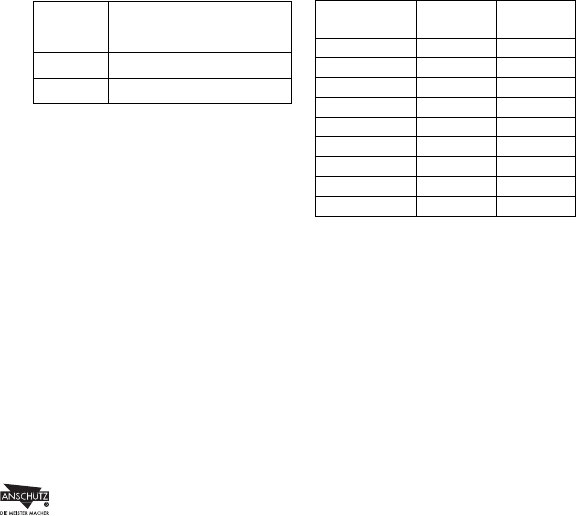
34
atmospheric pressure must be in line with the
values of the chart.
lubricants 1) is to be applied.
3. Smell and taste
The air must be without significant smell or
taste.
4. Content of carbon dioxide
The content of carbon dioxide must not
exceed 500 ml/m
3
(500 ppm).
5. Content of carbon monoxide
The content of carbon monoxide must not
exceed 15 ml/m
3
(15 ppm).
Content of water
1. There must be no liquid water.
2. The air for compressed air respirators must
have a dew point which is low enough to
avoid condensing and freezing. If the
equipment is used and stored under a known
temperature the dew point under pressure
must be at least 5°C below the assummably
lowest temperature. If the conditions for use
and storage of the compressed air reservoir
are not known, the dew point under pressure
must not exceed -11°C.
3. The maximum content of water in the air at
Nominal Max. contents of water in the
pressure air at atmospheric pressure
bar mg/m
3
40 - 200 50
> 200 35
Chart 1
Note:
The contents of water of the air which is
delivered from the compressor to fill 200 bar
or 300 bar compressed air containers should
not exceed 25 mg/m
3
.
ChecksChecks
ChecksChecks
Checks
Any suitable method is allowed as far as it
corresponds to the following general
requirements:
•
to measure and judge the results the
accuracy of the method must be
considered and
•
the proof limit of the applied method must
be below the required limit.
Appendix
Requirements for Compressed Air
Oxygen
The content of oxigen must be within the range
of (21 +/- 1) Vol. % (dry air).
Impurities
1. General information
Compressed air for respiratory equipment
must not contain impurities in a concentration
which might have toxic or harmful effects. In
any case there must be as little impurities as
possible and they must be far below the na-
tional limit of exposition. Combined effects
of more than one impurity must be considered.
If there are no national restricting requirements
the values of 2 to 3 must be applied.
Note: The limit concentration for every
impurity should be deducted from the natio-
nal limit of exposition. The influences of
pressure and exposition time should be
considered as much as possible.
2. Lubricants
The content of lubricants (drops or mist) must
not exceed 0.5 mg/m
3
. In case of synthetic
Components Mass-% Volume-%
(dry air) (dry air)
Oxygen (O
2
) 23, 14 20, 9476
Nitrogen (N
2
) 75, 5 78, 084
Argon (Ar) 1, 288 0,934
Carbon dioxide (CO
2
)
0, 048 0, 0314
Hydrogen (H
2
) 0, 000003 0, 00005
Neon (NE) 0, 00127 0, 001818
Helium (HE) 0, 000073 0, 000524
Krypton (Kr) 0, 00033 0, 000114
Xenon (Xe) 0,000039 0, 0000087
Chart 2Chart 2
Chart 2Chart 2
Chart 2
Typical composition of natural airTypical composition of natural air
Typical composition of natural airTypical composition of natural air
Typical composition of natural air
(ISO 2533)(ISO 2533)
(ISO 2533)(ISO 2533)
(ISO 2533)
